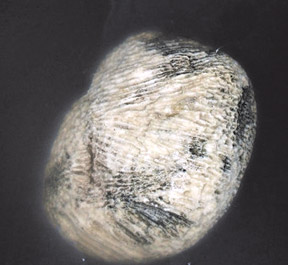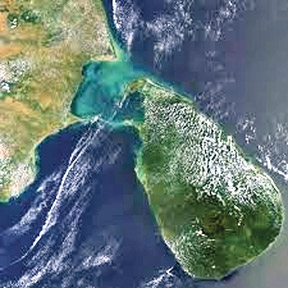Bridge over the Palk Strait
Ranil
Wickremesinghe’s idea of ‘Hanuman Bridge’ connecting Rameswaram with
Talaimannar is back in the news with the Indian Minister of Road
Transport contemplating a US$ 3.6 billion bridge building project to
connect the two countries
by B.C. Sharma
It remains to be seen if Sri Lanka will agree to India’s proposal to
build a bridge across the Palk Strait to link Rameswaram in Tamil Nadu
with Talaimannar in North Sri Lanka.
 |
|
Train over waters of Palk
Strait at Pamban Bridge, India - YouTube |
The Indian Road Transport Minister, Nitin Gadkari, had proposed in
June, to conduct a feasibility study of the project estimated to cost
US$ 3.6 billion.
Apparently, Gadkari had not consulted Colombo prior to making the
statement because officials in Sri Lanka said they had not been formally
approached by New Delhi on this matter.
When the idea was mooted earlier in 2002, it had drawn heavy flak
from Sri Lankan nationalists who feared a massive influx of Indians,
especially from Tamil Nadu, which could pose a threat to security in the
then war-torn Northern Province. However, interestingly, it was Prime
Minister Ranil Wickremesinghe, who was also Prime Minister at that time,
who had mooted the project.
Long history
He named it, the ‘Hanuman Bridge’ as according to the Hindu epic
Ramayana, it was Lord Hanuman who built a bridge of rocks across the
Palk Strait to help Lord Rama cross it to fight King Ravana, who had
abducted his wife, Seetha.
But Wickremesinghe’s idea of building the bridge sank without a trace
along with his other plan to end Tamil terrorism through a
Norwegian-brokered peace process in 2002-2004. Wickremesinghe himself
had to demit office following an election defeat. The idea of a bridge
across the Palk Strait has a long history. At the end of the 19th
Century, the British, who were then ruling India and Sri Lanka,
seriously considered the construction of a bridge across the 35 km
stretch of sea, so that tea and rubber plantation workers from Tamil
Nadu could be moved easily between India and the island.
According to Dr. Willie Mendis, Emeritus Professor of Town and
Country Planning, Moratuwa University, the project was revived in 1894
by a Madras-based Consultant Railway Engineer.
The Madras Railways quickly got a technical blueprint and costing
done and by 1913-14, Mandapam was connected with Pamban Island by a rail
bridge with a road segment.
 |
|
NASA images reveal some
rock outcrops in the Palk Strait between India and Sri Lanka and
few historians believe these could be the part of the
mythological bridge
- girikeshavan.wordpress.com
|
A terminal was built at Dhanushkodi. The Pamban Bridge had a portion
which could be lifted to permit boats to pass underneath. On the Sri
Lankan side, Mannar was connected to the Talaimannar jetty by a rail
bridge across the sea. And the first train from within Sri Lanka,
crossed from Mannar to Talaimannar in 1914.
Wickremesinghe steps in
Though the rail tracks at the two ends of the proposed bridge were
constructed, the bridge across the Palk Strait was not. According to
Mendis this was due to the difference in the track gauges in the two
countries.
While it was broad gauge on the Sri Lankan side, it was narrow gauge
on the Indian side. Over time, due to various factors, including war,
the bridge building project was not pursued. However, during the
2002-2004 Peace Accord, the then Prime Minister, Ranil Wickremesinghe,
asked India to help build what he called the ‘Hanuman Bridge’.
 |
|
Earth Snapshot, Palk
Strait - eosnap.com |
The Sri Lankan side envisaged a four-lane highway with a parallel
single rail track. The Board of Investment (BOI) fixed the cost at Rs 88
billion (USD 654 million at the present exchange rate).
According to Mendis, there was enthusiasm for the project among
engineers on both sides of the Palk Strait.
Many good papers were presented at a seminar held in Colombo in
August 2002 under the aegis of the Sri Lanka Institution of Engineers
and the Indian Institution of Engineers (Tamil Nadu Centre). But New
Delhi’s response was ‘lukewarm’ because the then Tamil Nadu government
was against the bridge.
Asian road network
After Eelam War IV, however, the bridge idea was revived as part of
the SAARC and Asian road connectivity projects.
It was discussed by SAARC Transport Ministers in Colombo in 2009. |

